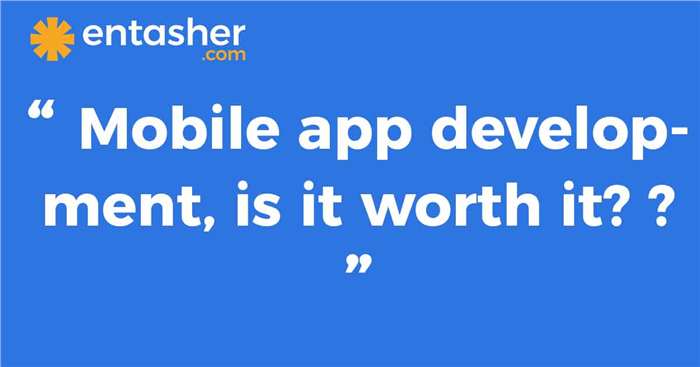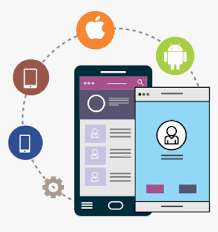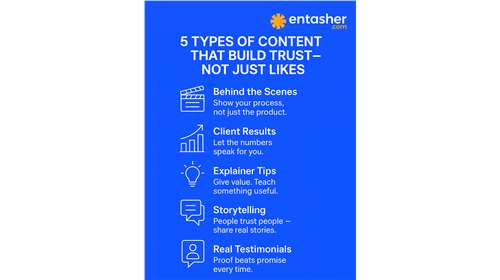
What are the mobile App development types and methodologies? ✽

Mobile app development, is it worth it?
There are many mobile applications available for download. Some applications simply inform the smartphone user of the weather forecast, while others can schedule meetings, healthcare, and even government. Businesses are no longer satisfied with just their website, they want to follow the trend and allow their customers to be even more connected.
Some companies create mobile applications to ease the purchase process of the customers, to receive feedback, and to save time, and effort while going through the application rather than browsing the website.
What exactly is Mobile app development?
Developing mobile applications is a process where a software is created for smartphones by coding markup language and mainly it is created for Android and iOS. The applications are available online on the stores and can be downloaded and installed. The applications can also be viewed on a mobile web browser.
The languages used for coding the software of the applications include Java, Swift, C# and HTML5. As mobile applications are currently the most popular way for people and the business to connect to the internet, it would help the business a lot to follow the trends and develop an application to dominate the market by keeping up with the trends.
The best thing about developing your own mobile application is the fact that it will be tailor made to suit all your business needs. They can address the target audience directly, rather than catering to the mass audience.

4 Types of mobile applications
The four types of mobile applications are:
1- Native Mobile Applications: The mobile applications that are developed using Native method are usually developed by using the programming language that is given by the platform itself, allowing it to run on the OS itself such as Android or iOS.
The advantages of this type are that it has the best runtime performance, visible on app stores, and enhance the user experience. On the other hand the disadvantages are the cost of developing and maintaining the application, and the multiple coding needed to be done for each platform.
2- Cross-Platform Native Mobile Applications: This type is used to allow developers to develop using different programming languages but compiling them on the native application that is run by the Operating System of the device.
The advantages of this type are that it uses a single code base for multiple platforms, and it is easy to develop and maintain. While its disadvantages are that it depends on the bridges and libraries of the native device features, this limits the performance of the mobile application.
3- Hybrid Mobile Applications: This type is built using the standard web technologies like JavaScript; they are compiled as app installation packages. They work on a “web container” and this provides bridges and runtime for native devices.
The advantages are that they include a shared code base between web and mobile apps; it uses web development skillets to build mobile apps. The disadvantages of this type are that they have low performance, and that their native device features supports are limited
4- Progressive Web Applications: are types of softwares that are built using web applications; this is a different type to the traditional mobile application development. It can work on any platform that uses standard compliant browser this includes desktop and mobile devices.
The advantages are that this approach does not need installation and can be accessed using a URL, it is also accessible for both the web and mobile. The disadvantages are that it has limited support for native device features and the capabilities of the app depend on the browser used.

6 reasons to develop a mobile application
There are many reasons to developing mobile application for your business. Some of these reasons are as mentioned below:
- Building loyalty: can increase customer loyalty towards the brand and encourage purchases through the application.
- Increase brand visibility: billions of applications are downloaded each year.
- Increase brand accessibility: it is easier to navigate through mobile applications rather than website pages.
- Improve customer relationship: receive feedback from customers, update customers real-time about new features, and access customer details.
- Facilitates new client data retrieving: provide simple survey questions to retrieve and save information on the customers as leads.
- Increase business revenue: with products and services displayed on the mobile application it will be easier for customers to purchase what they want.

6 step mobile application development process
- Strategy building: identify the strategic goals of the application and how to implement them to work towards creating a successful application.
- Analyze and plan: at this stage you analyze what the requirements for the application are, also identify the platform that the mobile application will be launched on, the Operating system, and any other skills needed to develop the application.
- UI/UX Design: make sure that the application is user friendly, attractive and enhances the user experience through interactivity.
- Mobile app development: this is where you start developing the backend, API, and mobile application.
- Application Testing: after developing the application you need to test it in different criteria to make sure that it is working as you had planned.
- Application launching: after making sure that the application passed all the testing criteria, start launching it on the OS stores like Android and iOS, but make sure that it supports future enhancements.

How did mobile application development start?
According to an academic article titled “Mobile Application and Its Global Impact “ written by Rashedul Islam , Rofiqul Islam , Tahidul Arafhin they mentioned that in the early 2000’s simple mobile applications were developed to tell the time, or even do simple calculations, and they did not need any internet connection. Developers discussed then that mobile applications can be more than that, they don’t have to be used just for simple tasks. With the launch of smartphones like iPhones, more complicated applications were created and they needed internet access to be used.
With the need for internet connection to use mobile applications, mobile broadband subscriptions exceeded the normal broadband subscriptions.
What is Entasher.com’s role?
Entasher.com has over 100 Digital marketing agencies that provide Mobile application development services to their clients. The agencies provide high quality services with excellent results for their clients. To view the agencies that provide Mobile application development service on entasher.com please visit: https://entasher.com/s/mobile-app-development-companies
Frequently Asked Questions (FAQ’s):
What is required to develop a mobile app?
Pretty much any programming language can be used to develop the back-end of the mobile app. For Operating Systems like iOS Objective-C or Swift programming language can be used. But other Android OS Java or Kotlin programming languages can be used.
Is it profitable to develop mobile apps?
Around 16% of Android app developers earn over 5,000 USD per month, while around 25% of iOS developers earn over 5,000 USD through the earnings of the app.
How much does mobile app development cost?
Mobile app development is expensive depending on the features and the interactivity of the application, although there are some free templates, the average cost for mobile app development can range between 1500 $ to 20000 $
These prices are subject to increase or decrease depending on the amount of features added to the application and the service provider.



